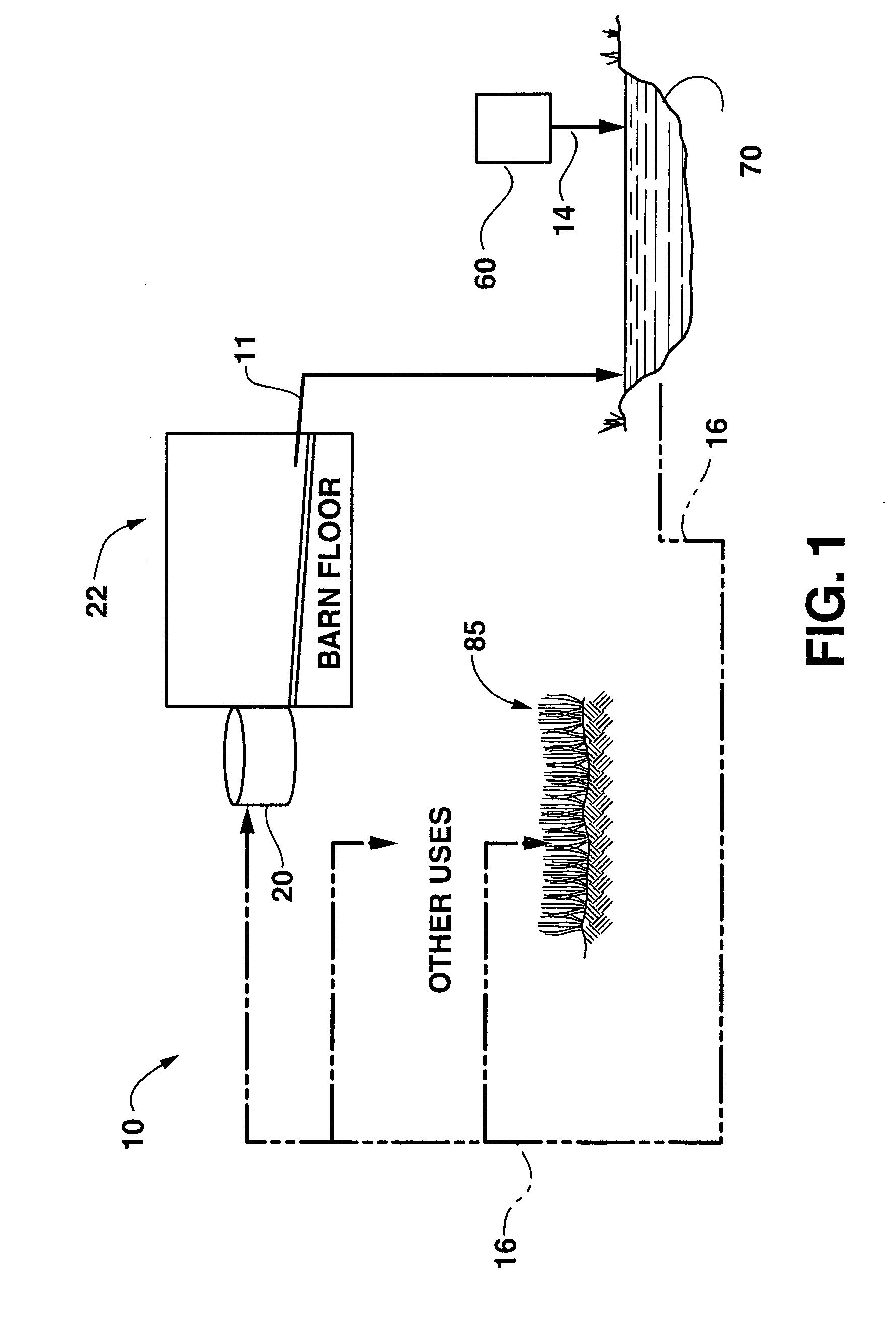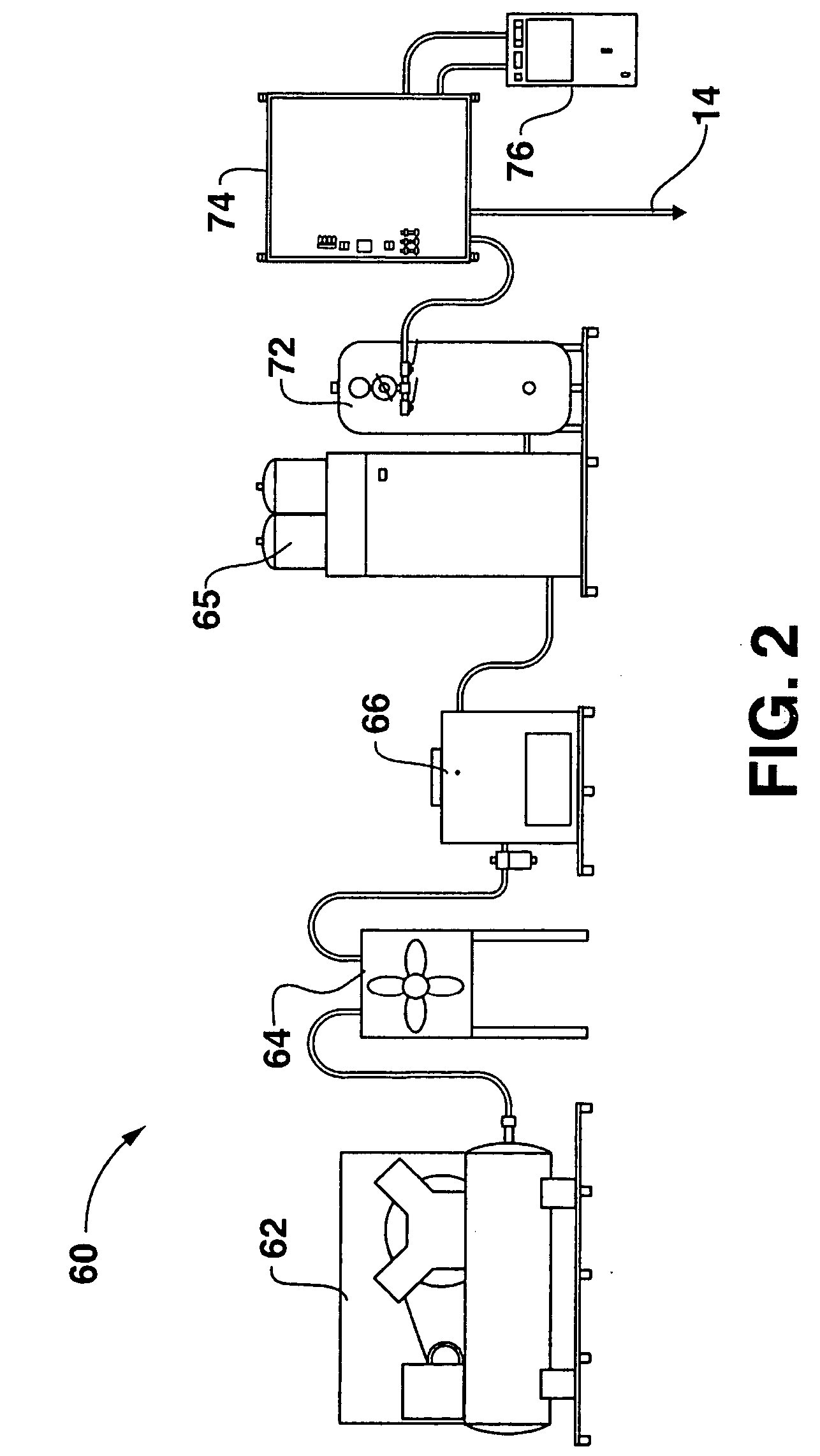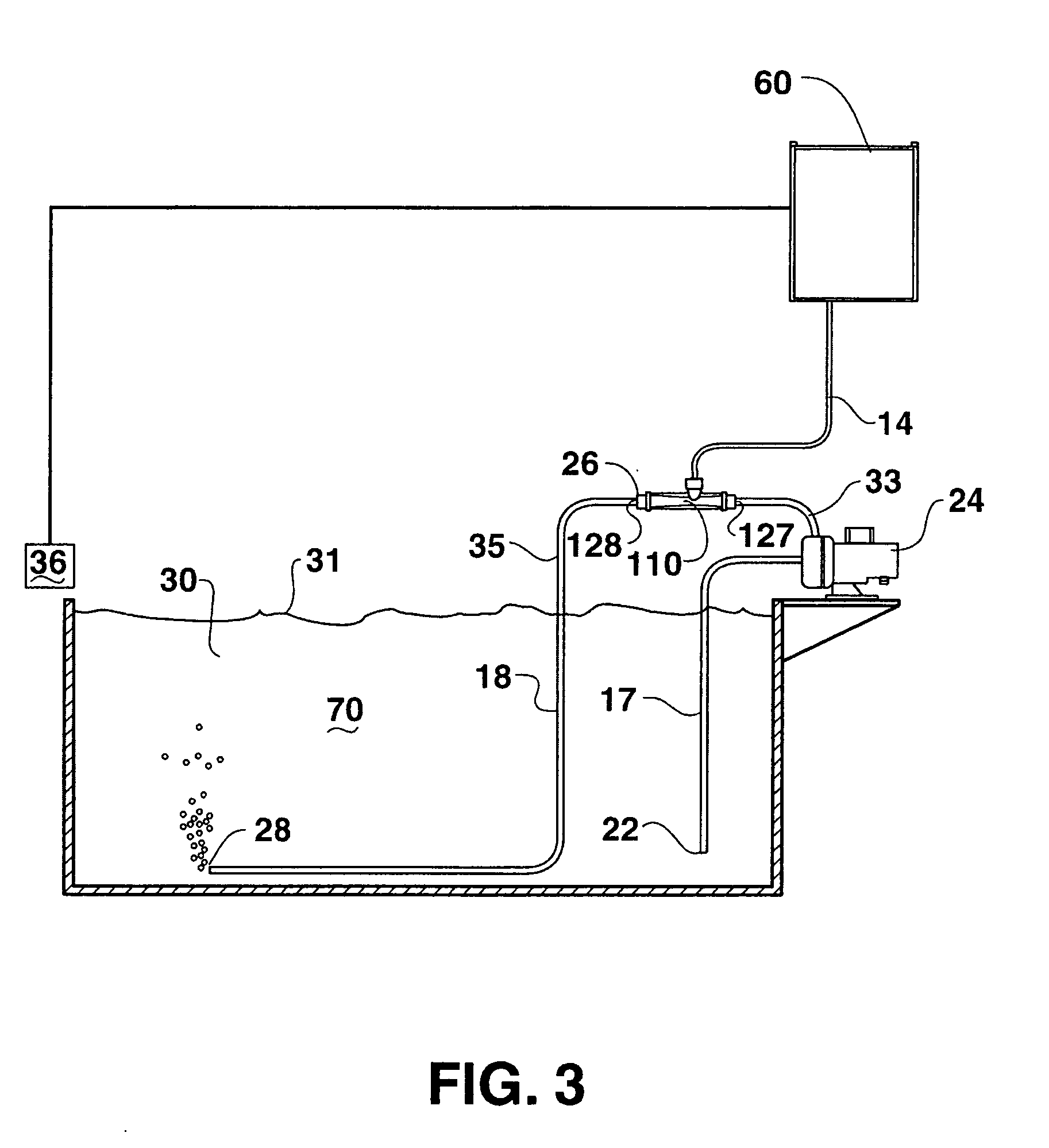Carbonaceous waste treatment method using ozone
a waste treatment method and carbonaceous technology, applied in the nature of treatment water, multi-stage water/sewage treatment, treatment of wastewater with pathogenic microorganisms, etc., can solve the problems of large carbonaceous waste, large carbonaceous waste production in medical facilities, and waste efficient neutralization and disposal
- Summary
- Abstract
- Description
- Claims
- Application Information
AI Technical Summary
Benefits of technology
Problems solved by technology
Method used
Image
Examples
example 1
[0103] Aqueous waste was collected from a swine waste lagoon located in rural Georgia. Eight liters of the aqueous waste was placed in a test column where it was contacted with ozone generated from an ozone generating system with a capacity of 6.6 grams / hour.
[0104]FIGS. 8A and 8B graphically illustrate the results of ozone contact on the aqueous waste in regard to Turbidity, measured in NTU (Nephelometric Turbidity Units), total suspended solids (TSS), volatile suspended solids (VSS), COD and BOD.
example 2
[0105] A seven million gallon swine waste lagoon located in Missouri that receives waste from two swine barns, each housing 2,000 pigs, was treated according to the presently disclosed process. The swine waste was flushed every two hours with 2,200 gallons of water. The waste flush was carried out over five days during which the flushed waste was stored. At the end of this period, the waste was transferred to the lagoon. Ozone was added to the lagoon by means of two spargers placed on the bottom of the lagoon and connected to an ozone system at the edge of the lagoon. The ozone generator had an output of approximately 18 pounds of ozone per day.
[0106] Samples were taken from the lagoon over the entire duration of the test and examined for fecal coliform, total bacteria, total suspended solids, and chemical oxygen demand (COD). Results can be seen in FIGS. 9A-9D. The addition of the swine waste to the lagoon at Day 5 can be seen in the Figures.
example 3
[0107] Waste was collected from the floor of a dairy operation in Oregon with the use of very little water. The waste was approximately 30-50 times as concentrated as flushed waste such as that treated in Examples 1 and 2, above.
[0108] Samples of 8 liters wet volume were treated for a period of 180 minutes with ozone supplied to the sample at a rate of 6.6 g / hr. Results are illustrated below in Table 1.
TABLE 1Initial ValueFinal ValueBOD (mg / L)4,4502,880COD(mg / L)18,2009,200Fecal Coliforms / 100 mL1,600,000,000Phosphorous (mg / L)11090Suspended Solids (mg / L)11,8004,070Volatile Solids (mg / L)7,6705,670
PUM
| Property | Measurement | Unit |
|---|---|---|
| diameter | aaaaa | aaaaa |
| diameter | aaaaa | aaaaa |
| diameter | aaaaa | aaaaa |
Abstract
Description
Claims
Application Information
 Login to View More
Login to View More - R&D
- Intellectual Property
- Life Sciences
- Materials
- Tech Scout
- Unparalleled Data Quality
- Higher Quality Content
- 60% Fewer Hallucinations
Browse by: Latest US Patents, China's latest patents, Technical Efficacy Thesaurus, Application Domain, Technology Topic, Popular Technical Reports.
© 2025 PatSnap. All rights reserved.Legal|Privacy policy|Modern Slavery Act Transparency Statement|Sitemap|About US| Contact US: help@patsnap.com



